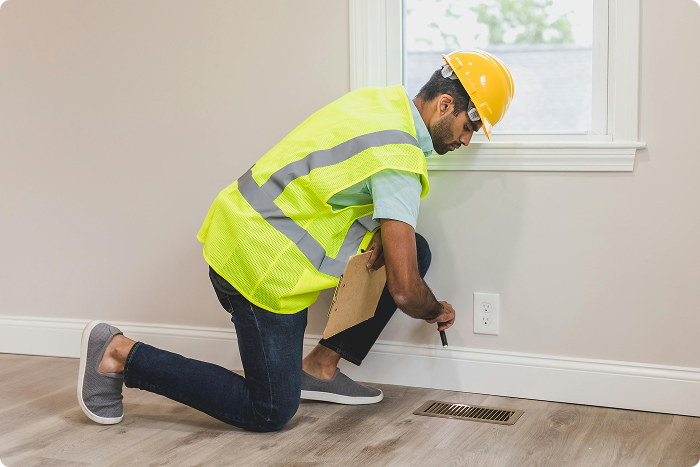Tackling Blower Issues: What to Do When Your Blower Won't Turn Off
By Molly Dean · Jul 25, 2025

When your blower won't turn off, it can feel like a perpetual headache. This problem not only leads to higher utility bills but also wears out your HVAC system prematurely, affecting your home's comfort levels. Understanding the potential causes and solutions, whether you're opting for a DIY approach or bringing in a professional, will save you time and money. This guide covers common issues, troubleshooting steps, and maintenance tips to help you handle blower issues efficiently.
Common Reasons Why Your Blower Won't Turn Off
1. Thermostat Settings
The thermostat is often the first place to check. Ensure that it's set to the correct mode and temperature. Sometimes, the thermostat gets stuck in the "fan on" setting, causing the blower to run continuously.
2. Fan Limit Switch
A malfunctioning fan limit switch can result in the blower running non-stop. This switch controls the fan's operation and if it gets stuck, the blower won't shut off even when the furnace is not heating.
3. Wiring Issues
Problems with the system's wiring, such as frayed or short-circuited wires, can cause electrical signals to misfire, leading to a blower that won't turn off.
4. Control Board Problems
The control board, essentially the brain of your HVAC system, can malfunction and send incorrect signals to the blower, resulting in constant operation.
5. Clogged Air Filters
Dirty air filters can impede airflow, causing the system to overheat and the blower to stay on as a protective measure.
Diagnosing Blower Issues
Step-By-Step Diagnostic Guide:
-
Check Thermostat Settings:
- Ensure it is not set to the "fan on" position.
- Replace the batteries if it's a battery-operated model.
- Examine the display for any error codes.
-
Inspect the Fan Limit Switch:
- Turn off the power to the furnace.
- Locate the fan limit switch; it usually has a push-in, pull-out button.
- If the switch is stuck, you may need to replace it.
-
Examine Wiring:
- Turn off power to the HVAC system.
- Look for visible signs of frayed or disconnected wires.
- Use a multimeter to check for continuity in the wiring.
-
Test the Control Board:
- Access the control board by removing the furnace cover.
- Look for any burn marks or loose connections.
- Consider consulting a professional for detailed diagnostic tests.
-
Inspect and Replace Air Filters:
- Locate the air filter compartment on your furnace.
- Remove and examine the filter. If it's dirty, replace it with a new one.
DIY Solutions vs Hiring a Professional
DIY Solutions:
- Changing Thermostat Settings: Reset the thermostat and ensure it's functioning properly. Replace batteries if needed.
- Replacing the Air Filter: Regularly check and replace clogged air filters to maintain proper airflow and system efficiency.
- Resetting the Fan Limit Switch: Manually reset the switch if it's stuck. Ensure you follow safety measures by turning off the power first.
When to Hire a Contractor:
- Electrical and Wiring Issues: For electrical problems, it's safer to hire a licensed electrician to avoid hazards.
- Control Board Problems: A professional can accurately diagnose and replace a faulty control board.
- Persistent Issues: If the blower issue persists despite troubleshooting, consulting a professional ensures thorough identification and resolution of the problem.
Tips for Hiring a Reliable Contractor
Evaluate Potential Contractors:
- Check Qualifications and Licensing: Ensure the contractor has the necessary licensing and insurance.
- Request and Compare Quotes: Obtain and compare itemized quotes from multiple contractors.
- References and Reviews: Read online reviews and ask for references to gauge the contractor's work quality and reliability.
Negotiating with Contractors:
- Be Clear About Your Needs: Clearly describe the problem and your expectations.
- Discuss Schedules and Deadlines: Ensure timelines are established and agreed upon to avoid delays.
- Agree on Payment Terms: Discuss and agree on payment terms upfront, including deposits and final payments upon completion.
Maintaining Your Blower for Optimal Performance
Routine Maintenance Tips:
- Regular Inspections: Have your HVAC system inspected annually by a professional.
- Regular Filter Replacement: Change or clean air filters every 1-3 months.
- System Calibration: Regularly calibrate your thermostat to ensure accurate readings.
Avoiding Future Blower Issues:
- Duct Cleaning: Have your ducts cleaned periodically to prevent blockages.
- Sealing Leaks: Inspect and seal any leaks in your ductwork.
- Upgrading Systems: Consider upgrading older systems to more energy-efficient models.
Conclusion
Handling a blower that won't turn off can be a daunting task, but it becomes manageable with a systematic approach. From checking thermostat settings to examining the control board, following the outlined steps can help you identify and rectify the issue. For persistent problems or when safety is a concern, hiring a professional is always the best course of action. Keeping your HVAC system in top condition with regular maintenance can prevent many blower issues and ensure a comfortable home environment.
For more detailed advice or to find trusted professionals, consider using Houztask AI to ask questions or find pros. Visit Houztask AI or Find a Pro for the best local services.
Need help?
Let HouzTask help you diagnose the issue or connect with a trusted local pro — in minutes.
Get Started with HouzTask